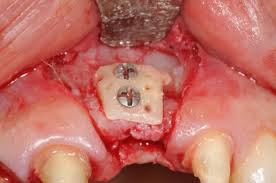A bone graft is surgery to place new bone or bone substitutes into spaces around a broken bone or bone defects to aid in healing, improving function or strengthening. Bone graft can be taken from the patient’s own healthy bone (this is called an autograft). Or, it can be taken from frozen, donated bone (allograft). In some cases, a manmade (synthetic) bone substitute can also be used.
Autograft bone is the safest to use due to the low risk of disease transmission. It can also offers a better chance of acceptance and effectiveness in the transplant site, since it contains the greatest amount of the patient’s own bone growing cells and proteins.
The principles involved in successful bone grafts include osteoconduction (guiding the reparative growth of the natural bone), osteoinduction (encouraging undifferentiated cells to become active osteoblasts), and osteogenesis (living bone cells in the graft material contribute to bone remodeling).
The main susbstitutes used for bone grafting are: Demineralized Bone Matrix, Ceramics, Coral, Graft Composites, Bone Morphogenetic Proteins.
Uses of Bone Grafting:
- Fuse joints to prevent movement
- Repair broken bones (fractures) that have bone loss
- Repair injured bone that has not healed
Along with the benefits, the bone grafting also have risks associated with it, such as:
- Reactions to medications
- Problems in breathing
- Infection
- Bleeding
- Pain at the place on the body where the bone was removed
Besides the main use of bone grafting- it is also used for dental implants, where it is used to fuse joints to prevent movement, repair broken bones that have bone loss, and repair broken bone that has not yet healed.
Bone grafts are used in hopes that the defective bone will be re-grow or will healed with little to no graft rejection.
Currently, the United States Food and Drug Administration have not yet approved bone grafting therapies; however, research is being undertaken in both humans and animals to know their safety and effectiveness.

